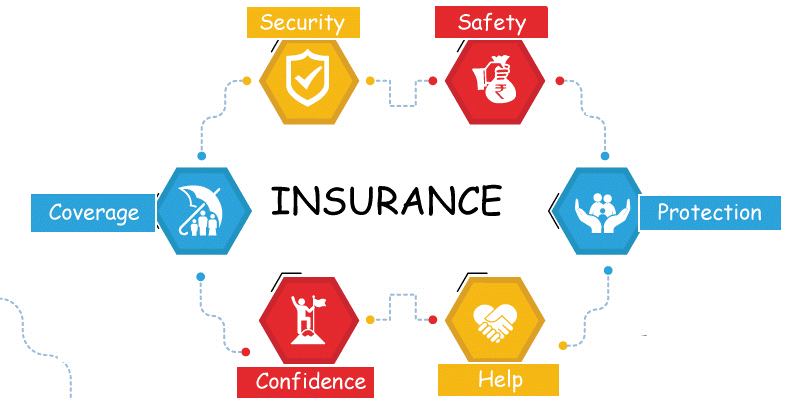Understanding the Basics of Insurance: A Comprehensive Guide
Insurance is a critical financial tool that provides individuals, families, and businesses with protection and peace of mind in times of uncertainty. Whether it’s safeguarding your health, your car, your home, or your business, insurance plays a vital role in managing risks and mitigating potential financial disasters. In this comprehensive guide, we will delve into the fundamentals of insurance, exploring its various types, key terminologies, the process of obtaining insurance, and how to make informed decisions when selecting the right coverage for your needs.

I. The Concept of Insurance
1.1 Definition of Insurance
Insurance is a contractual arrangement between an individual or entity (the insured) and an insurance company (the insurer) in which the insured pays a premium in exchange for financial protection against specific risks or losses. This protection comes in the form of policy coverage, which outlines the circumstances under which the insurer will provide compensation.
1.2 The Role of Insurance
Insurance serves several essential functions in society:
- Risk Management: Insurance helps individuals and businesses manage risks by transferring the financial burden of potential losses to an insurer.
- Financial Protection: It provides a safety net, ensuring that policyholders can recover from unexpected events without facing financial ruin.
- Peace of Mind: Knowing you have insurance coverage can reduce stress and anxiety, allowing you to focus on other aspects of life or business.
- Promoting Economic Stability: Insurance contributes to economic stability by providing a cushion against large-scale losses that could disrupt financial markets.
II. Types of Insurance
2.1 Life Insurance
Life insurance provides financial support to beneficiaries upon the insured’s death. It can be term life insurance, which covers a specified period, or whole life insurance, which provides lifetime coverage with cash value accumulation.
2.2 Health Insurance
Health insurance covers medical expenses, ensuring access to healthcare services without incurring exorbitant costs. Policies can vary in coverage, including basic medical care, prescription drugs, and hospitalization.
2.3 Auto Insurance
Auto insurance offers protection in case of accidents, theft, or damage to your vehicle. It typically includes liability coverage, collision coverage, and comprehensive coverage.
2.4 Homeowners Insurance
Homeowners insurance safeguards your home and its contents from damages caused by perils like fire, theft, and natural disasters. It also provides liability coverage in case someone is injured on your property.
2.5 Property and Casualty Insurance
Property and casualty insurance encompasses a broad range of insurance types, including renters insurance, condominium insurance, and flood insurance, each tailored to specific needs.

III. Key Insurance Terminology
3.1 Premium
A premium is the amount of money you pay to the insurer in exchange for insurance coverage. It can be paid monthly, annually, or at other intervals, depending on the policy.
3.2 Deductible
The deductible is the out-of-pocket amount the policyholder must pay before the insurer covers the remaining costs of a claim. Higher deductibles often result in lower premium costs.
3.3 Policy Limit
Policy limits define the maximum amount an insurer will pay for a covered claim. It’s essential to choose policy limits that adequately protect your assets and liabilities.
3.4 Claim
A claim is a formal request to the insurance company for coverage following a loss or damage event. The insurer evaluates the claim and, if approved, provides compensation.
IV. Obtaining Insurance
4.1 Assessing Your Needs
Before purchasing insurance, assess your specific needs and risks. Consider factors like your age, health status, location, and financial situation to determine the type and amount of coverage required.
4.2 Comparing Policies
Shop around and compare policies from different insurers. Look at coverage options, deductibles, premiums, and policy terms to find the right fit for your needs.
4.3 Selecting an Insurance Company
Choose a reputable and financially stable insurance company. Research their customer reviews, financial ratings, and customer service reputation.
V. Making Informed Decisions
5.1 Understanding Policy Documents
Thoroughly review your insurance policy documents to understand the terms, conditions, and coverage limits. Seek clarification from your insurer if anything is unclear.
5.2 Regularly Reviewing Coverage
Life changes, and so should your insurance coverage. Regularly assess your policies to ensure they still align with your needs and make necessary adjustments.
5.3 Risk Mitigation
Take proactive steps to reduce risks. For example, installing a security system can lower your homeowner’s insurance premium, and safe driving habits can lead to lower auto insurance rates.

Conclusion
Insurance is a cornerstone of financial planning, providing security and stability in an unpredictable world. By understanding the basics of insurance, the different types available, and how to navigate the insurance process, you can make informed decisions that protect your health, your assets, and your future. Use this comprehensive guide as a valuable resource on your journey towards insurance literacy and financial well-being.